Stepping into the world of Hungarian wines is like embarking on a journey through centuries of winemaking tradition, where each sip tells a story of rich history and unparalleled craftsmanship. Nestled in the heart of Europe, Hungary boasts a diverse landscape that gives rise to an array of unique grape varieties and terroirs.
This results in an extraordinary range of wines that are as captivating as they are complex. Whether you’re a wine enthusiast looking to expand your palate or simply curious about exploring the lesser-known gems of the wine world, this beginner’s guide to Hungarian wines will open up a world of discovery and delight.
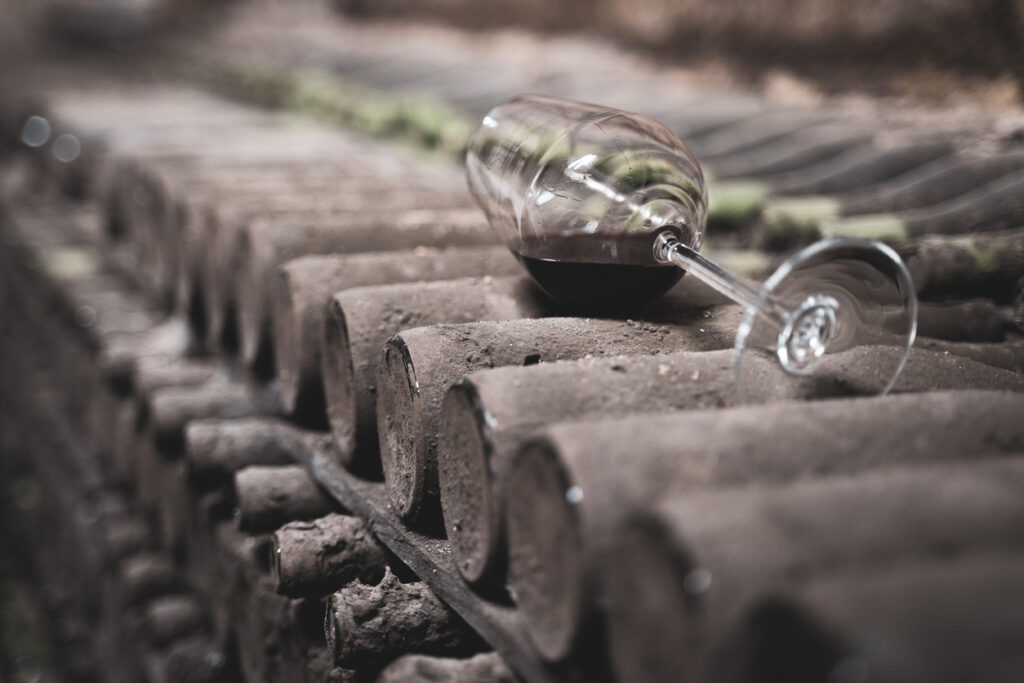
A Brief History of Hungarian Wine culture
Hungarian wine has a rich history dating back to Roman times when vine cultivation was introduced. During the Middle Ages, Hungarian Wines were prized throughout Europe, with Tokaji becoming known as the Wine of Kings. The 17th and 18th centuries saw significant developments in winemaking techniques and wine trade, solidifying Hungary’s reputation as a prominent wine-producing region.
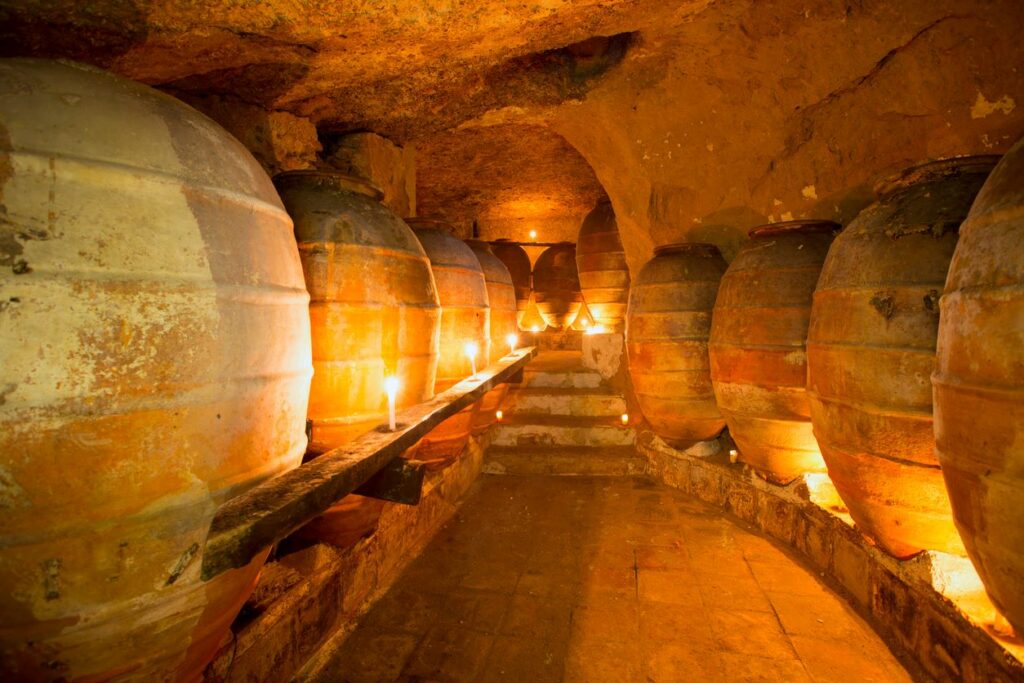
The late 19th century brought devastation to the Hungarian wine industry due to phylloxera infestation and political turmoil. However, the post-World War II era saw renewed efforts to rebuild and modernize the vineyards, leading to increased quality and international recognition.
Today, Hungarian wines are experiencing a renaissance with an emphasis on indigenous grape varieties like Furmint and Hárslevelű, alongside innovative winemaking practices that have put Hungary back on the map as a source of exceptional wines.
Hungary’s top wine regions
Nestled in the heart of Central Europe, Hungary’s famous wine regions boast a rich tapestry of history, culture, and viticulture. With a legacy dating back to Roman times, these regions have evolved into enclaves of innovative winemaking techniques and varietals.
Eger wine regions
Eger, for example, is renowned for its robust reds and distinctive terroir shaped by volcanic soils and cool climate. Known for its Bull’s Blood (Egri Bikavér), this region offers a bold yet elegant tasting experience that leaves an indelible impression.
Tokaj wine region
Moving on to the Tokaj region, it’s impossible not to be enchanted by the allure of its famed sweet wines. Embracing traditional methods like botrytis-affected grape harvests, the terroir imparts unique flavors to its renowned Tokaji Aszú wines. This sweet wine of kings has captivated palates for centuries with its luscious honeyed notes and unparalleled complexity. The blend of innovation and tradition in Hiungary’s wine regions ensures an enthralling journey for oenophiles seeking new frontiers in their exploration of world-class wines.
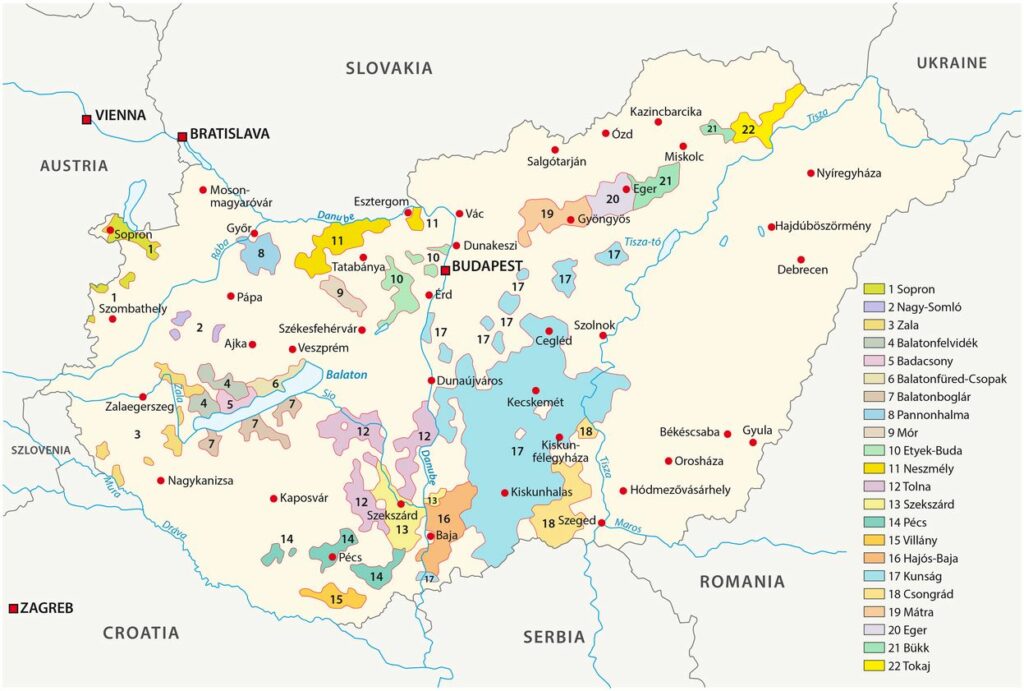
Balaton
Hungary’s wine regions offer a delightful mix of tradition, innovation, and breathtaking landscapes. The Balaton region is renowned for its stunning vineyards lining the shores of Lake Balaton, producing crisp whites and delicate rosés. The volcanic soil in this area imparts a unique mineral character fresh acidity to the wines, reflecting the terroir with every sip.
Sopron Wine regions
In Sopron, located near the Austrian border, winemakers are crafting elegant reds that showcase the region’s exceptional climate and diverse soils. With a focus on indigenous grape varieties such as Kékfrankos and Blaufränkisch, Sopron wines exhibit an intriguing balance of fruitiness and earthy undertones that captivate the senses.
Szekszárd Wine regions
Moving eastward to Szekszárd, rich red wines dominate the scene, celebrating traditional Hungarian varietals like Kadarka and Kékoportó. Here, winemakers are embracing modern techniques while preserving time-honored practices to produce bold yet refined reds that embody Szekszárd’s rich viticultural heritage.

Duna Wine Region
Hungary’s wine regions are a treasure trove waiting to be explored, with the Duna Region and North Transdanubia Region standing out as fascinating destinations for wine enthusiasts. The Duna Region, located along the Danube River, boasts a unique terroir that is conducive to producing elegant white wines. Its rich volcanic soil and favorable climate create the perfect conditions for cultivating varieties white grapes such as Ezerjó and Hárslevelű, known for their crisp acidity and vibrant flavors.
North Transdanubia Region
Moving on to the North Transdanubia Region, it is characterized by its diverse topography and microclimates, making it an ideal location for growing both white wine and red grape varieties. Here, winemakers craft exceptional Olaszrizling whites renowned for their complexity and depth. Additionally, the region’s commitment to sustainability and innovation has led to an emergence of organic and natural winemaking practices that add a new dimension to the wine scene in Hungary.
Hungarian Grape varieties
Hungary is a treasure trove of unique and diverse grape varieties that have been cultivated for centuries.
Furmint grape
The Furmint grape, renowned for producing Hungary’s iconic sweet dessert wines,, is gaining recognition for its versatility and complexity. While Furmint has long been associated with the luscious Tokaji dessert wine, winemakers are now harnessing its potential to create a diverse range of styles. From dry, crisp whites to sparkling wines and even oaked expressions, Furmint showcases an impressive ability to adapt to various winemaking techniques.

The unique terroir of the Tokaj region contributes greatly to Furmint’s character. The volcanic soils and moderate continental climate impart distinct mineral notes and layers of complexity. Winemakers are also experimenting with different fermentation methods and aging processes to further enhance the grape’s expression of place. This evolution in winemaking practices has led to a surge of interest in Furmint beyond Hungary’s borders. Sommeliers and wine enthusiasts seek out these intriguing offerings.
Kadarka grape
Another standout Hungarian grape variety is Kadarka. It is celebrated for its vibrant red color and rich history dating back to the 16th century. This ancient grape produces wines with distinctive aromas of sour cherry, pepper, and earthy notes. These notes reflect the terroir of Hungary’s vineyards. Adventurous wine lovers will delight in exploring the nuances of this indigenous Hungarian varietal as it continues to gain recognition on the international stage.

Welschriesling Grape
Hungarian grape varieties offer a rich and diverse range of flavors, each with its own unique characteristics. The Welschriesling, known for its zesty acidity and green apple notes, thrives in Hungary’s cooler climate, producing crisp and refreshing white wines. Its versatility in winemaking allows for both dry and sweet styles, catering to a wide range of palates.
Gewurztraminer
The Gewurztraminer, with its aromatic intensity and spice accents, adds an intriguing dimension to Hungarian winemaking. Thriving in Hungary’s volcanic soils, this variety boasts floral aromas alongside lychee and rose petal flavors. Its ability to create complex, full-bodied wines with a touch of sweetness makes it a captivating choice for wine enthusiasts seeking out new tasting experiences.
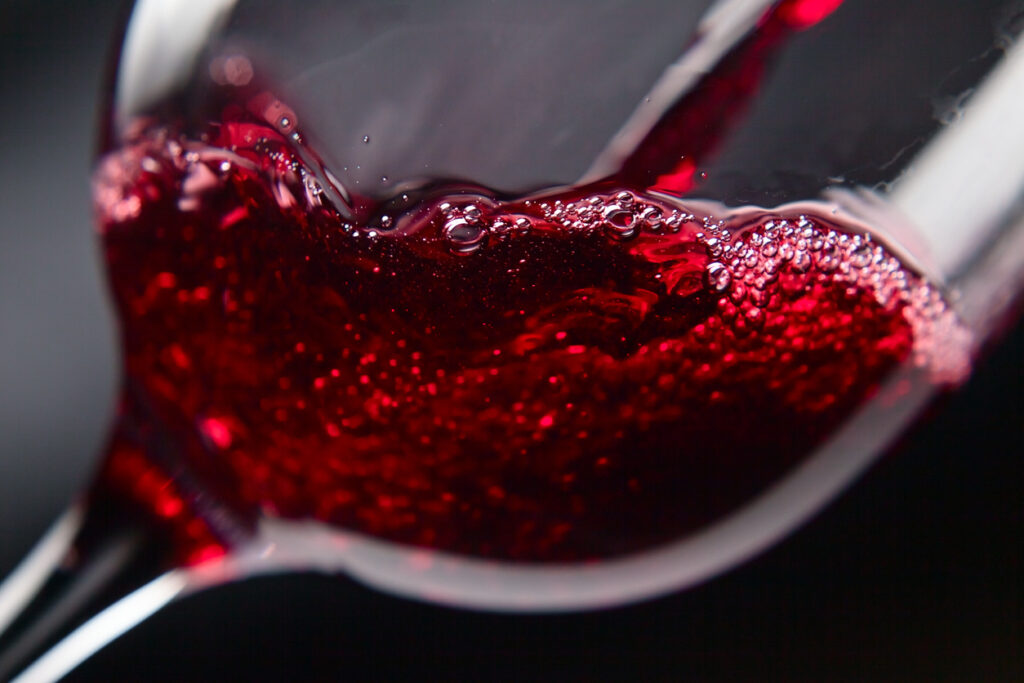
Blaufränkisch Grape
This grape varietal holds a special place in the heart of Hungarian wine culture. It is one of the most prominent red grape varieties. With its deep ruby color and bold tannins, this variety produces sumptuous wines boasting dark fruit flavors alongside hints of pepper and spice. It is known for its aging potential and distinctive character derived from Hungarian terroir. Blaufränkisch showcases the country’s capacity to produce expressive red wines that stand out on the global stage.
Lipovina Grape
Hungarian grape varieties are gaining recognition for their unique characteristics and exceptional flavors. One of the standouts is Hárslevelű or Lipovina,. It is a white grape variety known for its aromatic qualities and high sugar content. This grape is commonly used to produce sweet, luscious wines. They show notes of honey, apricot, and flowers, making it a favorite among wine enthusiasts looking for something different.
Irsai Olivér Grape
Another noteworthy Hungarian grape variety is Irsai Olivér – a cross between Pozsonyi Fehér and Csaba Gyöngye grapes. It produces fresh, aromatic white wines with pronounced floral and fruity aromas like elderflower, peach, and citrus. The wine made from Irsai Olivér grapes offers a refreshing taste with well-balanced acidity. This makes it an excellent choice for those seeking crisp and vibrant flavors in their glass.
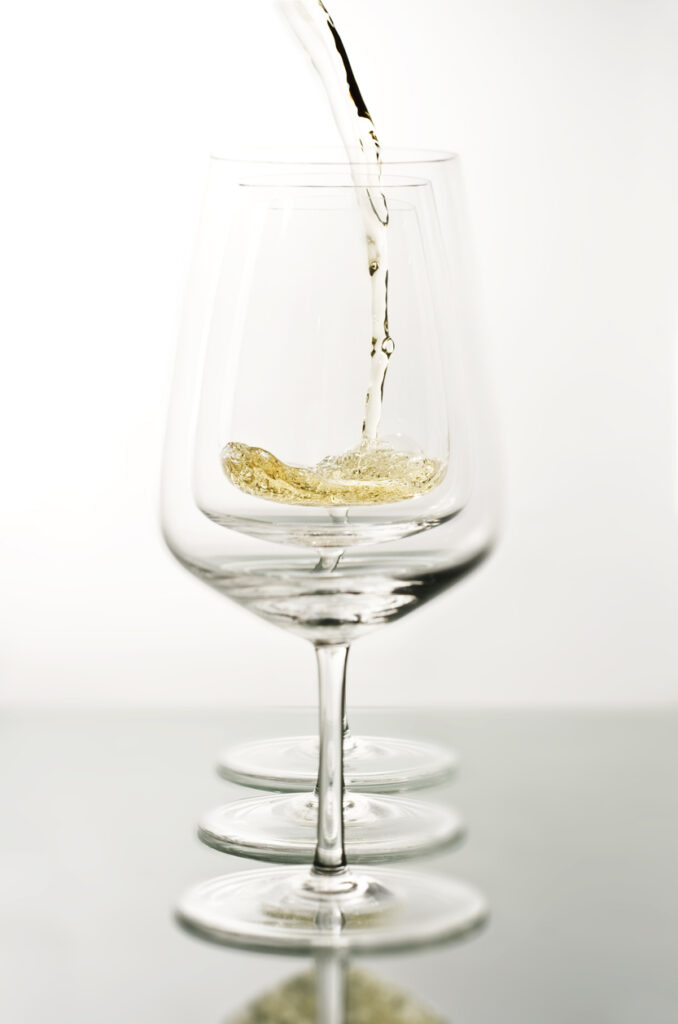
Hungarian Riesling
The unique Hungarian climate and terrain are ideal for cultivating a diverse range of grape varieties. These include Riesling and Pinot Gris. Hungary’s centuries-old winemaking tradition has allowed these grape varieties to thrive. At the same time they developped distinct flavors influenced by the country’s rich soils and microclimates. The Riesling grapes grown in the cool climate of northern Hungary produce aromatic and elegant wines with a perfect balance of acidity and fruitiness. On the other hand, Hungarian Pinot Gris grapes have adapted to warmer regions. This results in full-bodied wines with a luscious texture and notes of ripe pear and honey.
What sets Hungarian Riesling apart? Their ability to express the complexity of different terroirs, offering an exciting exploration for wine enthusiasts.
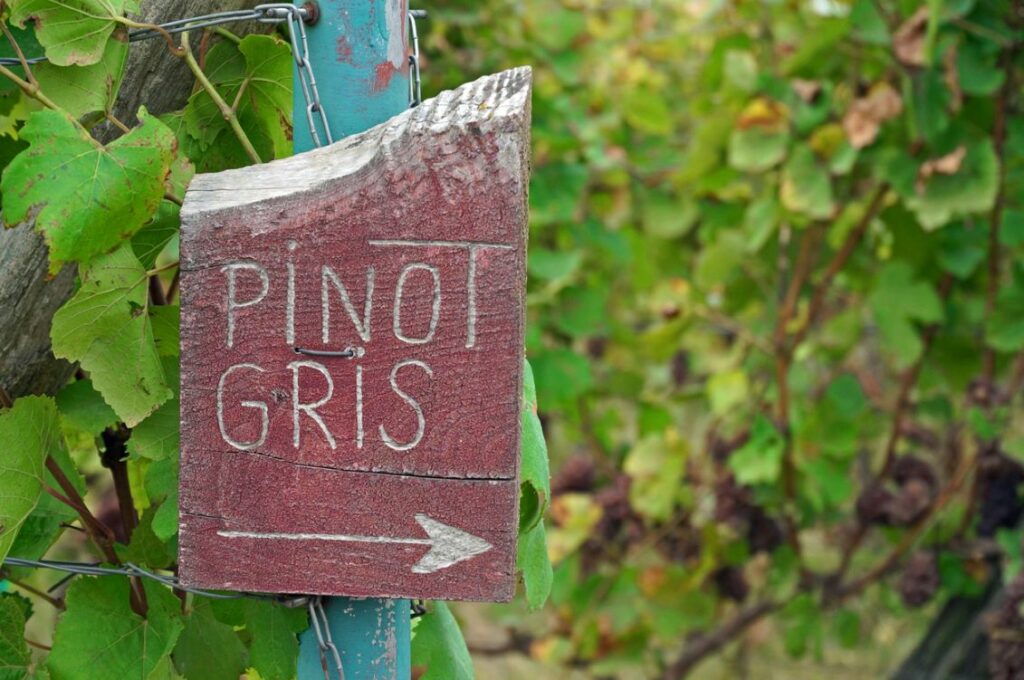
Pinot Gris in Hungary
The strategic placement of Pinot Gris vineyards on volcanic soil adds an intriguing mineral aspect to the wines that elevates their overall character. As global interest in Hungarian wines continues to grow, these distinctive grape varieties stand out as shining examples of Hungary’s winemaking potential. They invite exploration and appreciation from wine lovers seeking new experiences. Riesling and Pinot Gris with their unique profiles are influenced by the country’s specific terroir. They represent an exciting frontier for wine enthusiasts looking beyond traditional European varietals.

Cabernet sauvignon
The country’s favorable climate and soil composition create an ideal environment for cultivating this noble grape. It results in wines with rich flavors and complex aromas. Hungarian winemakers have been experimenting with different winemaking techniques to bring out the best of Cabernet Sauvignon. This allows to produce bold, full-bodied red wines that captivate the senses.
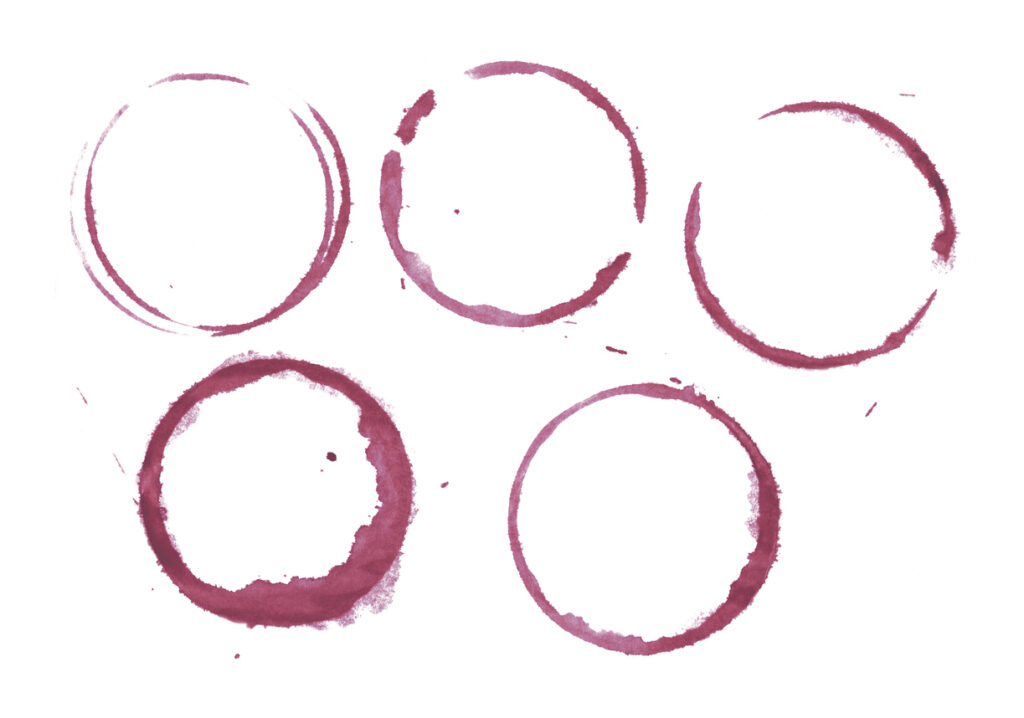
What sets Hungarian Cabernet Sauvignon apart is its distinct expression of terroir. Each region imparts its own nuances to the wine. From the elegant and structured styles of Villány to the more robust and spicy profiles from Eger, Hungarian Cabernet Sauvignon offers a wide range of sensory experiences for wine enthusiasts to explore. Additionally, blending with local grape varieties such as Kékfrankos or Kadarka adds a layer of complexity and depth to these wines. This further distinguishes them on the global stage. Interest in Hungarian wines continues to grow. It allows you to discover the diverse expressions of Cabernet Sauvignon from this dynamic wine country.
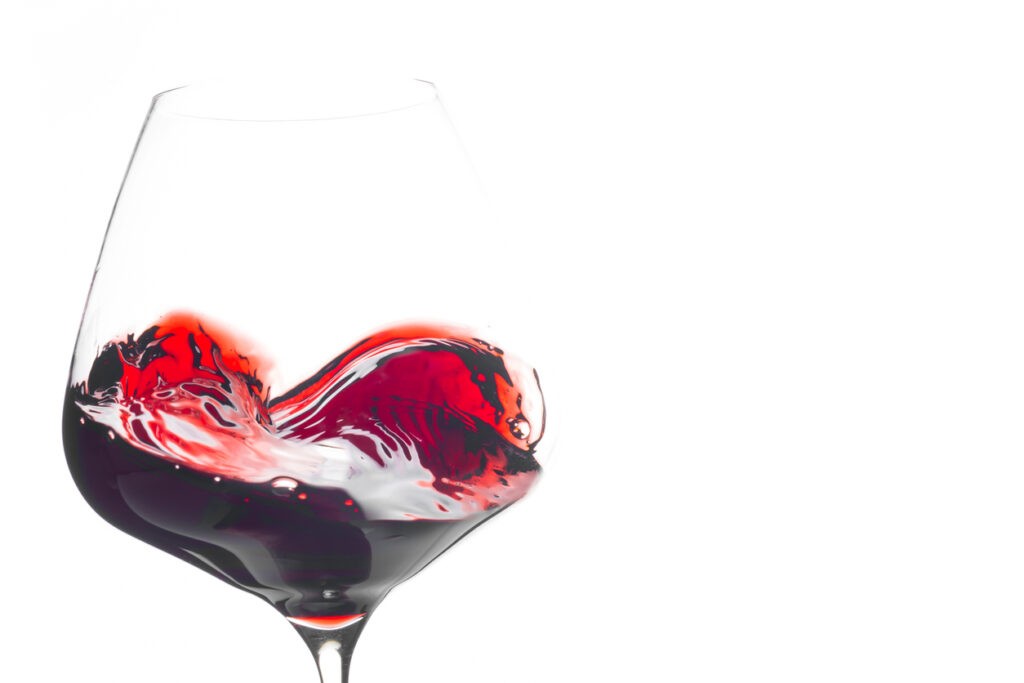
Cabernet Franc
Hungary’s diverse winemaking history is highlighted by an array of grape varieties, each captivating in its own right. One standout is Cabernet Franc, a red grape variety that has found a welcoming home in the Hungarian soil. Cabernet Franc is known for its luscious fruit flavors high acidity and aromatic complexity. It thrives in Hungary’s climate and contributes depth to the country’s renowned red wine blends.
This versatile grape variety also showcases its character when cultivated on Hungarian terroir. It exemplifies the unique fusion of tradition and modern winemaking techniques. As a result, Cabernet Franc wines from 22 wine regions in Hungary captivate with their rich earthiness, vibrant acidity, and supple tannins. Whether as a standalone varietal or as part of an inspired blend, Hungarian Cabernet Franc demonstrates the uncompromising commitment to quality that defines Hungary’s winemaking landscape.
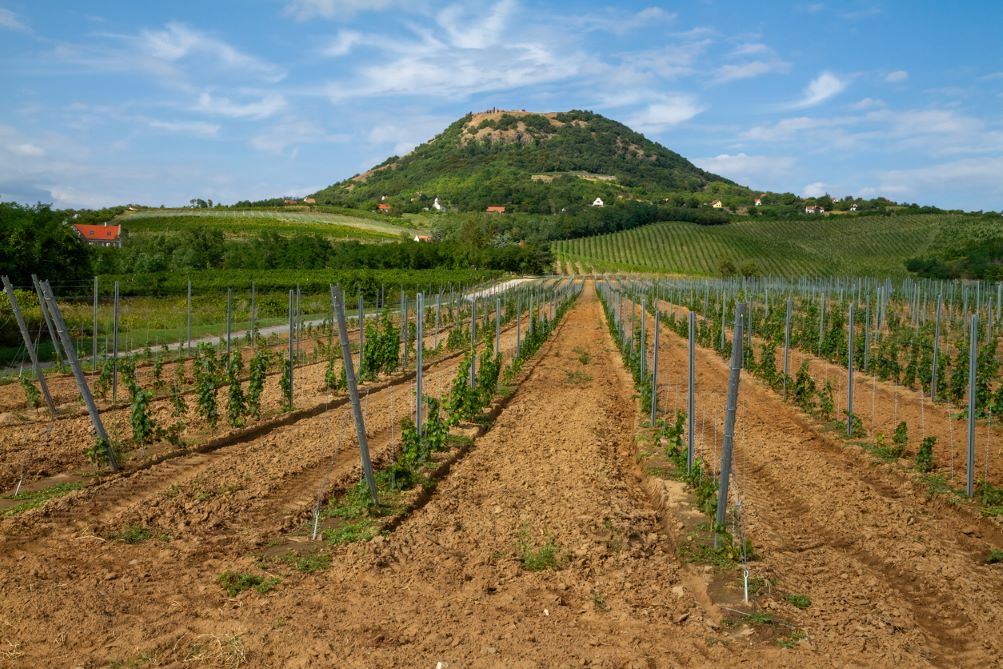
How to get started with Hungarian wine
Hungarian wine, often overlooked in the global market, is a treasure waiting to be discovered. To get started with Hungarian wine, begin by exploring its diverse regions and grape varietals. From the volcanic soils of the Badacsony region to the historic vineyards of Tokaj, each area offers a unique terroir and flavor profile.
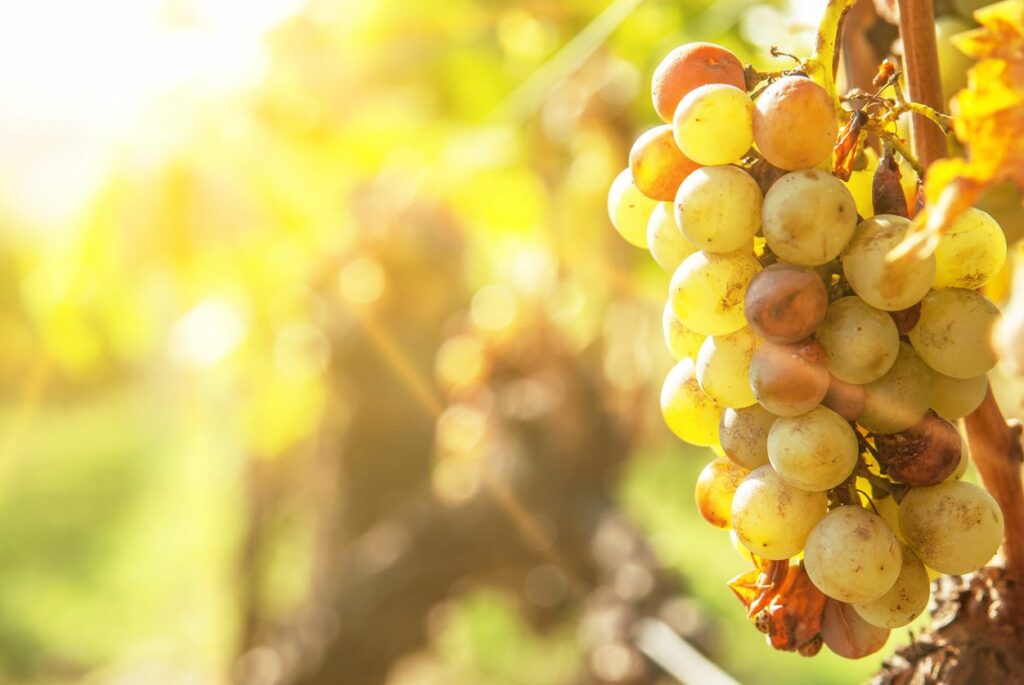
When approaching Hungarian wine, don’t shy away from indigenous grape varieties like Furmint and Kadarka. These grapes offer distinctive characteristics that set Hungarian wines apart from their international counterparts. Additionally, seek out small boutique wineries that prioritize sustainable practices and traditional winemaking methods. By doing so, you can experience the true essence of Hungarian wine culture. At the same time you support local producers who are dedicated to preserving their heritage.

As you embark on your journey into Hungarian wine, keep an open mind. Embrace the rich history and complexity that this underrated wine country has to offer. Whether you’re a novice or a seasoned oenophile, delving into Hungarian wines promises an exciting exploration of flavors from and traditions. They will captivate your palate and expand your vinous horizons. So raise your glass to new beginnings with Hungarian wine – it’s time for a truly unforgettable tasting experience!
Conclusion
Hungarian grape varieties have a rich and diverse history that contributes to the country’s vibrant winemaking tradition. From the elegant Furmint to the robust Kadarka, these unique grapes offer a wide range of flavors and characteristics. They resonate with wine enthusiasts around the world. The cultivation of indigenous grape varieties in Hungary preserves the country’s winemaking heritage. It also adds depth and complexity to its wines.
As interest in Hungarian wines continues to grow, there is a renewed focus on showcasing these exceptional grape varieties and their distinct terroir. Whether you’re a seasoned wine connoisseur or an adventurous enthusiast, exploring Hungarian grape varieties opens up a whole new world of sensory delights waiting to be discovered. Embrace the journey and savor

